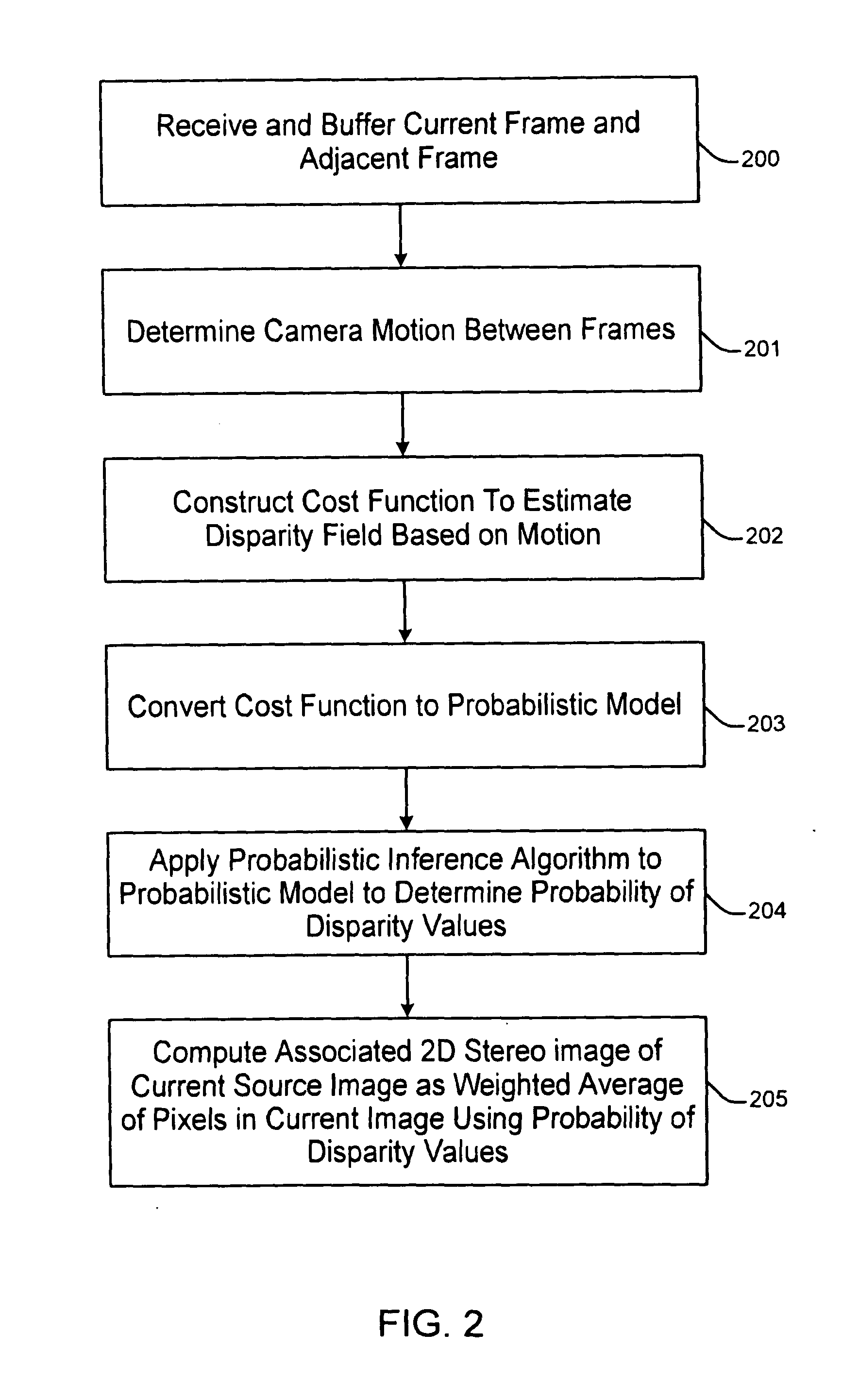Method and system for converting 2d image data to stereoscopic image data
a stereoscopic image and image data technology, applied in the field of generating stereoscopic or three-dimensional images, can solve the problems of significant limitations of approaches, distortion of depth maps, and difficult depth estimation process, and achieve the effect of less sensitive to the estimation noise of disparity maps
- Summary
- Abstract
- Description
- Claims
- Application Information
AI Technical Summary
Benefits of technology
Problems solved by technology
Method used
Image
Examples
Embodiment Construction
[0019]The present principles advantageously provide a method and system for generating stereoscopic image pairs from a single sequence of two dimensional (2D) monoscopic images (e.g., 2D video image sequence) having general camera motion. Although the present principles will be described primarily within the context of a specific system for converting 2D images into 3D stereoscopic images in which a left image is a reference image and a right image is a target image, the specific embodiments of the present invention should not be treated as limiting the scope of the invention. For example, in alternate embodiments of the present invention, any first image can be used as a reference image (i.e., right or left image) to derive a stereoscopic image pair.
[0020]In accordance with various embodiments of the present invention, 2D to 3D conversion techniques are designed to estimate a disparity map on the right eye image (target) using camera motion parameters that are determined from conse...
PUM
 Login to View More
Login to View More Abstract
Description
Claims
Application Information
 Login to View More
Login to View More - R&D
- Intellectual Property
- Life Sciences
- Materials
- Tech Scout
- Unparalleled Data Quality
- Higher Quality Content
- 60% Fewer Hallucinations
Browse by: Latest US Patents, China's latest patents, Technical Efficacy Thesaurus, Application Domain, Technology Topic, Popular Technical Reports.
© 2025 PatSnap. All rights reserved.Legal|Privacy policy|Modern Slavery Act Transparency Statement|Sitemap|About US| Contact US: help@patsnap.com



